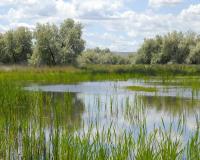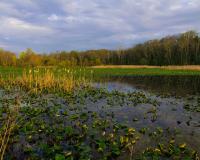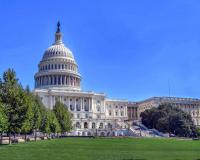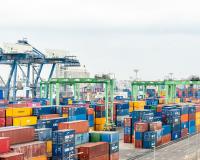
Vibrant Environment
All | Biodiversity | Climate Change and Sustainability | Environmental Justice | Governance and Rule of Law | Land Use and Natural Resources | Oceans and Coasts | Pollution Control

Peace is an essential element of sustainable development. In early June, the international community will gather at the forthcoming Stockholm+50 International Meeting to reflect on progress in sustainable development, the outstanding gaps and challenges, and to discuss the way forward. It is time — indeed, past time — to formally acknowledge the central role of peace in sustainable development and to take specific, concrete measures to incorporate these linkages in our policies, institutions, finances, and practices.

The Environmental Law Institute (ELI) is pleased to announce the winners of the 33rd Annual National Wetlands Awards: John R. White, Jessica Hua, Mark Laska, Zachariah Perry, and Mick Micacchion.

Peru is the fourth largest rainforest country, and its Amazon forests are one of the most biodiverse areas in the world. However, deforestation is a growing phenomenon. According to Peru’s Ministry of the Environment, from 2019 to 2020, about 203,272 hectares of Amazon forests were cut down during the Covid-19 pandemic.

The Environmental Law Institute (ELI) is pleased to announce the winners of the 33rd Annual National Wetlands Awards: John R. White, Jessica Hua, Mark Laska, Zachariah Perry, and Mick Micacchion.

This is the second of a two-part series of blog articles discussing CERCLA and environmental justice. Read Part I here.

This is the first of a two-part series of blog articles discussing CERCLA and environmental justice. Read Part II here.

Regional or bilateral trade promotion agreements, like the North American Free Trade Agreement (NAFTA), sometimes include environmental obligations for signatories. But only a few of these allow for environmental submissions—a process where persons or legal entities can raise issues with the enforcement record of any of the signatory nations.


For the last several decades, many leading businesses have expressed support for climate policy in the United States. While there are many businesses that expressed concerns and even advocated for policies back into the late 1990s, here I will trace efforts back to 2006. That was the year the U.S. Climate Action Partnership (USCAP) was initiated. The USCAP was a collaboration between leading businesses and climate-focused NGOs. Its goal was to develop consensus policy recommendations and principles for Congress and the new executive administration that would be elected in 2008.

The climate emergency is here, and the only way to stop the downward slide to chaos is to cut methane and other super climate pollutants as fast as possible, while also dramatically reducing carbon dioxide emissions. One message has been made clear by the United Nations Environment Programme and Climate and Clean Air Coalition’s Global Methane Assessment, and the IPCC’s Sixth Assessment reports: Cut methane now or doom the planet.